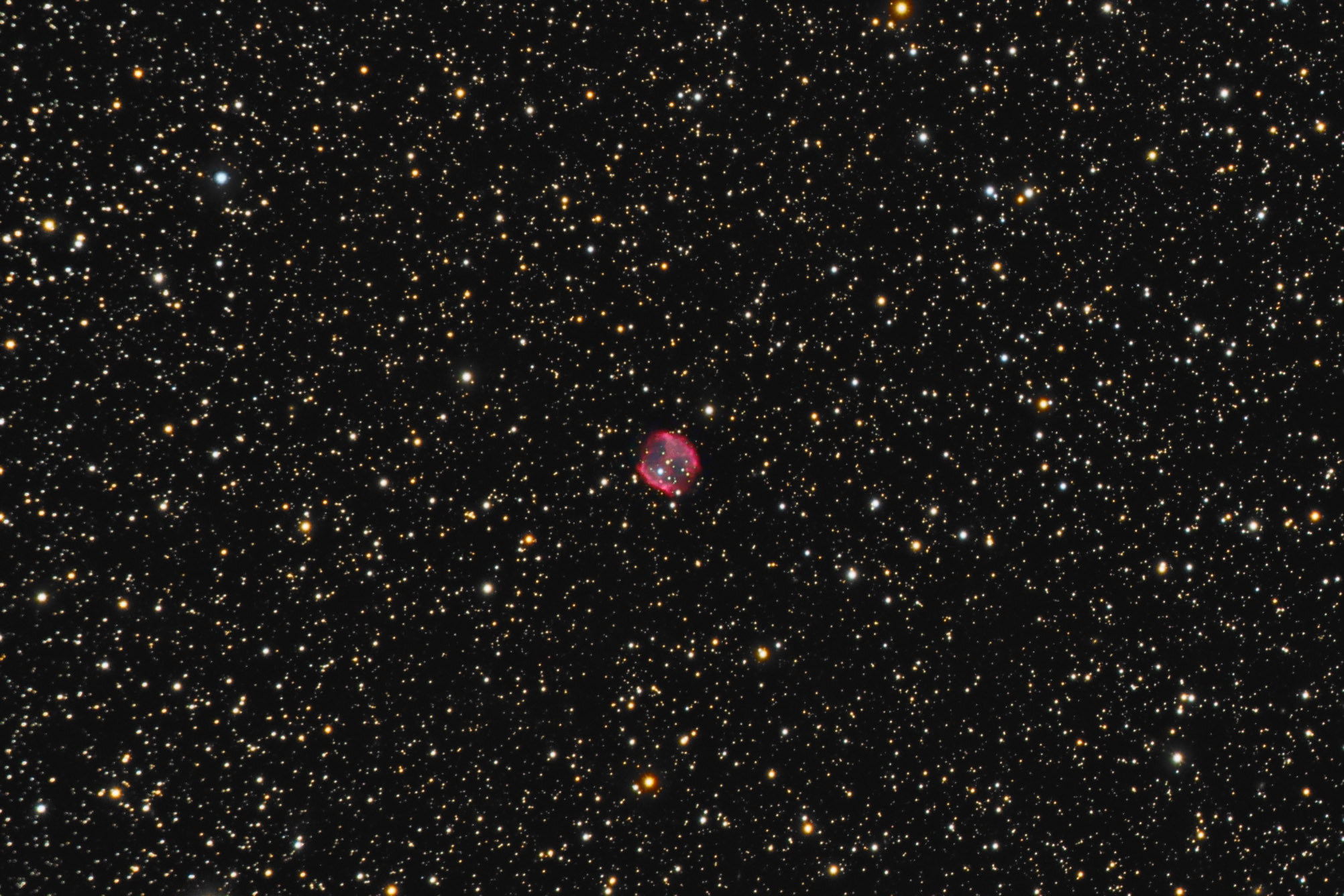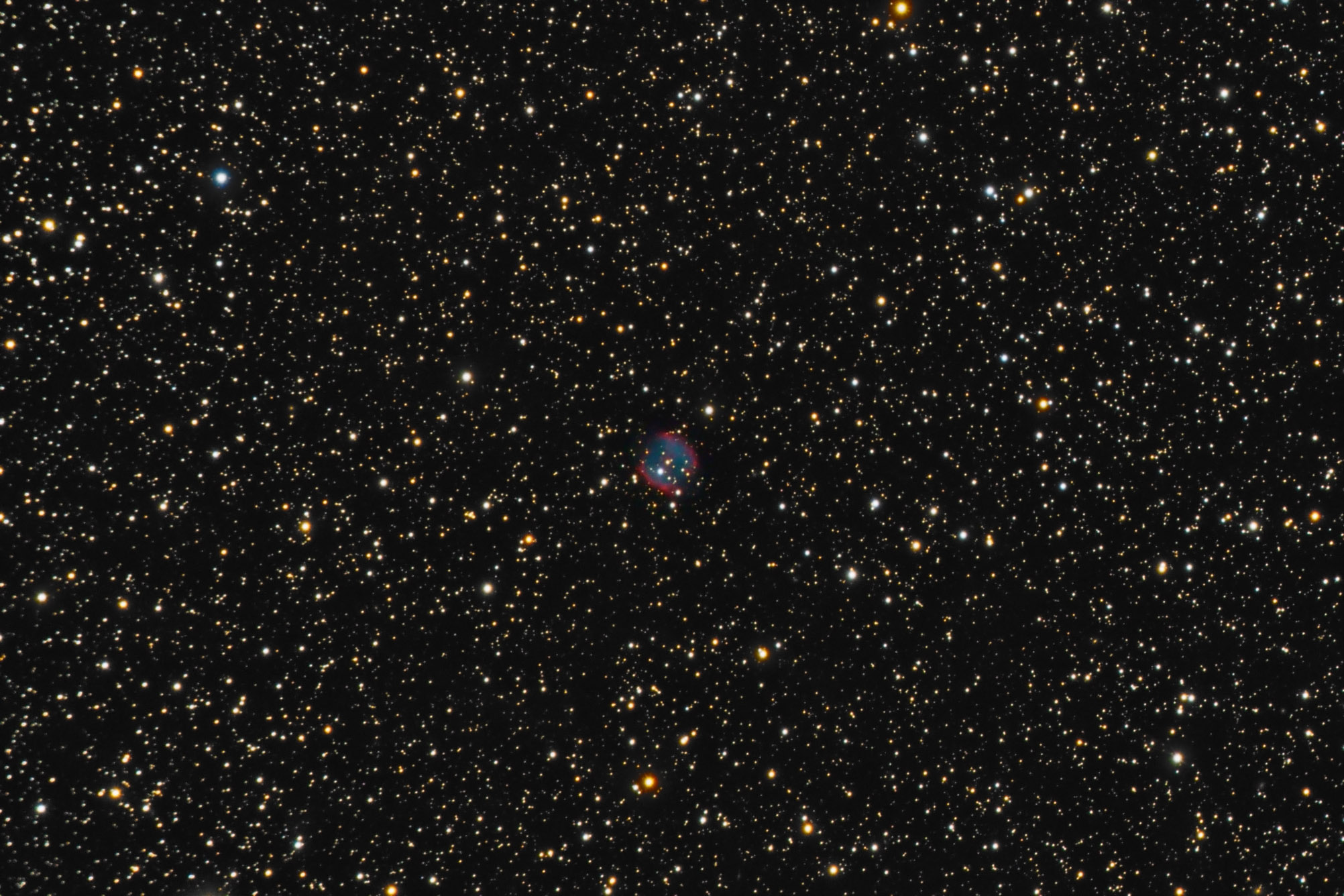| Description | Images |
Object name: PNABELL82Designation(s): PNABELL82, Abell 82 is a planetary nebula in western Cassiopeia about 1000 light-years by the only measurement I could find. The central star is a puzzle being a K0 subgiant star by this paper http://www.aanda.org/articles/aa/full_html/2011/02/aa13984-09/T4.html . Their table lists two K0 and two K3 stars along with a few M class central stars. This goes against the central star being a white dwarf so what's wrong? A K0 subgiant shouldn't put out enough UV to excite a SN. Besides, its the outer envelope being blown off that forms the PN yet a K0 star still has its outer shell. I have no idea how this can happen. Is the central star a double star in which the white dwarf is swamped by the much brighter giant or subgiant star? Is the central star too faint and there just happens to be a handy nearby one that gets tabbed for this? The planetary's size in my LRGB image is 80" of arc which makes it about 0.39 light-years across. This doesn't consider the faint ears seen in OIII light. They give it a diameter of about 113" for a size of 0.55 light-years assuming the 1000 light-year distance is correct. Lots of ifs in this so the error could be substantial. Related Designation(s):PNABELL82, | Permanent link: https://images.mantrapskies.com/catalog/OTHER/PNABELL82/PNABELL82L4X10HA4X30RGB2X10R-CROP125.JPG |



